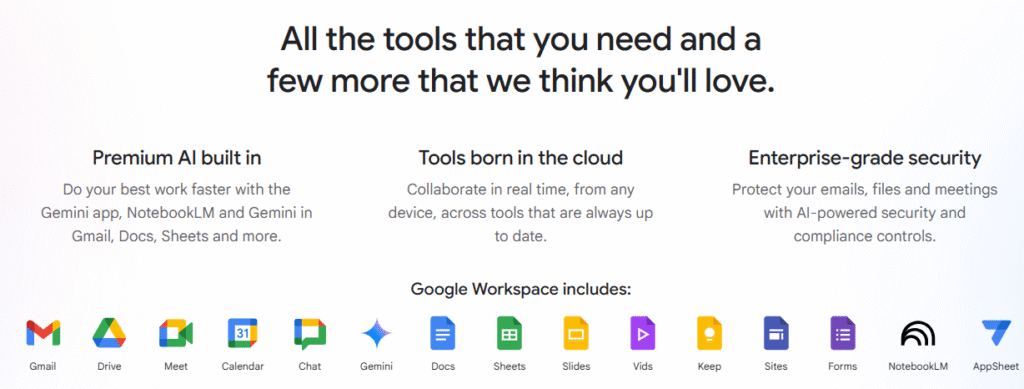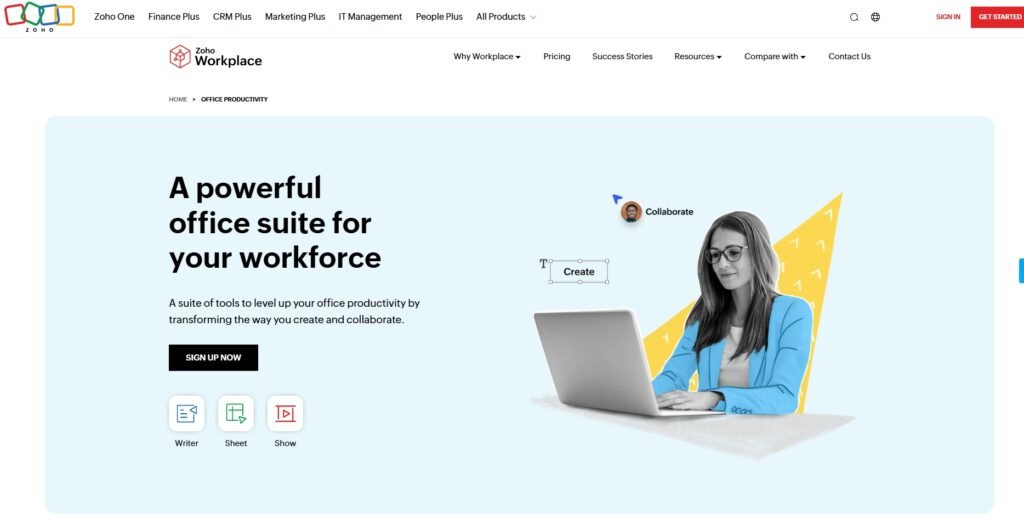Table of Contents
Top 10 Alternatives to Microsoft Office – Pros, Cons & Comparisons
Microsoft Office is a widely used productivity suite, but many users seek alternatives due to cost, compatibility, or preference for open-source solutions. This article explores the 10 best alternatives, highlighting their pros, cons, and real-world applications.
1. LibreOffice

LibreOffice is a free, open-source office suite that provides a powerful alternative to Microsoft Office
Pros:
✅ Free and open-source
✅ Strong compatibility with Microsoft Office formats
✅ Regular updates and community support
Cons:
❌ Formatting issues with complex MS Office documents
❌ No built-in cloud storage
Example:
A nonprofit organization uses LibreOffice for managing donor records and creating reports without licensing fees.
Image & Video: Click Here to view the detailed features
2. Google Workspace (Docs, Sheets, Slides)
Google Workspace offers cloud-based productivity tools that rival Microsoft Office
Pros:
✅ Seamless collaboration and real-time editing
✅ Automatic saving and version history
✅ Accessible from any device
Cons:
❌ Limited offline functionality
❌ Privacy concerns with cloud-based storage
Example:
A remote marketing team collaborates on Google Docs for content creation and Sheets for campaign tracking.
Image & Video: Click Here for detailed features
3. WPS Office
WPS Office is a lightweight alternative that closely resembles Microsoft Office. 
Pros:
✅ Highly compatible with Microsoft Office formats
✅ Built-in PDF toolkit
✅ User-friendly interface
Cons:
❌ Advanced PDF features require a subscription
❌ Limited real-time collaboration
Example:
A college student uses WPS Office for assignments and presentations due to its familiar interface.
Image & Video: Click Below to view more features
4. OnlyOffice
OnlyOffice is designed for professional teams needing robust collaboration features. 
Pros:
✅ Strong compatibility with Microsoft Office formats
✅ Secure document collaboration
✅ Custom plugins
Cons:
❌ Limited features in the free version
❌ Steeper learning curve
Example:
A tech startup uses OnlyOffice for secure, self-hosted document collaboration.
Image & Video: Click below for more features details.
5. Apache OpenOffice
Apache OpenOffice is a free alternative with basic office tools. 
Pros:
✅ Completely free and community-driven
✅ Supports multiple file formats
✅ Works well on older systems
Cons:
❌ Slower development compared to other alternatives
❌ Outdated user interface
Example:
A retired professional uses Apache OpenOffice for occasional document editing.
Image & Video: Click below for more details and features.
6. SoftMaker Office
SoftMaker Office is a premium alternative with strong compatibility. 
Pros:
✅ Excellent Microsoft Office compatibility
✅ Fast performance and lightweight
✅ Available for Windows, macOS, and Linux
Cons:
❌ Requires a paid license
❌ Limited cloud integration
Example:
A freelance writer uses SoftMaker Office for drafting articles efficiently.
Image & Video:
7. FreeOffice
FreeOffice is a lightweight and free alternative to Microsoft Office. 
Pros:
✅ Free for personal use
✅ Strong compatibility with Microsoft Office formats
✅ Simple and intuitive interface
Cons:
❌ Lacks advanced features
❌ No built-in cloud storage
Example:
A small business owner uses FreeOffice for basic document editing without subscription costs.
Image & Video:
8. Polaris Office
Polaris Office is a cloud-based alternative with mobile support. 
Pros:
✅ Cloud-based with mobile apps
✅ Strong Microsoft Office compatibility
✅ Free version available
Cons:
❌ Ads in the free version
❌ Limited offline functionality
Example:
A sales representative uses Polaris Office on their mobile device for quick document editing.
Image & Video:
9. Zoho Workplace
 Zoho Workplace is a business-focused alternative with collaboration tools.
Zoho Workplace is a business-focused alternative with collaboration tools.
Pros:
✅ Cloud-based with strong collaboration features
✅ Integrated with Zoho’s business tools
✅ Affordable pricing
Cons:
❌ Limited offline functionality
❌ Less popular than Google Workspace
Example:
A startup team uses Zoho Workplace for affordable collaboration tools.
Image & Video:
10. Calligra Suite
 Calligra Suite is an open-source alternative with creative tools.
Calligra Suite is an open-source alternative with creative tools.
Pros:
✅ Free and open-source
✅ Includes creative tools like vector graphics
✅ Available for Linux and Windows
Cons:
❌ Less intuitive interface
❌ Limited compatibility with Microsoft Office formats
Example:
A graphic designer uses Calligra Suite for creative document management.
Image & Video:
Comparison Table
Feature | LibreOffice | Google Workspace | WPS Office | OnlyOffice | Apache OpenOffice | SoftMaker Office | FreeOffice | Polaris Office | Zoho Workplace | Calligra Suite |
|---|---|---|---|---|---|---|---|---|---|---|
Cost | Free | Free (with premium plans) | Free (with premium features) | Free (basic) / Paid (advanced) | Free | Paid | Free | Free | Paid | Free |
Compatibility | Strong MS Office support | Full cloud integration | High compatibility with MS Office | Excellent MS Office support | Basic MS Office support | Excellent | Strong | Strong | Moderate | Limited |
Collaboration | Limited | Real-time editing | Limited | Strong team collaboration | Limited | Limited | Limited | Cloud-based | Strong | Limited |
Cloud Storage | No built-in | Google Drive | Third-party integration | Built-in storage options | No built-in | No built-in | No built-in | Cloud-based | Cloud-based | No built-in |
Ease of Use | Moderate | Very easy | Easy | Moderate | Basic | Easy | Easy | Easy | Moderate | Moderate |
Advanced Features | Good, but lacks cloud tools | Limited offline features | Strong PDF tools | Extensive plugins & features | Basic tools, fewer updates | Fast performance | Lightweight | Mobile support | Business tools | Creative tools |
Conclusions
Each of these alternatives offers unique benefits depending on your needs. Whether you prioritize collaboration, offline functionality, or cost-effectiveness, there’s an option for you.



